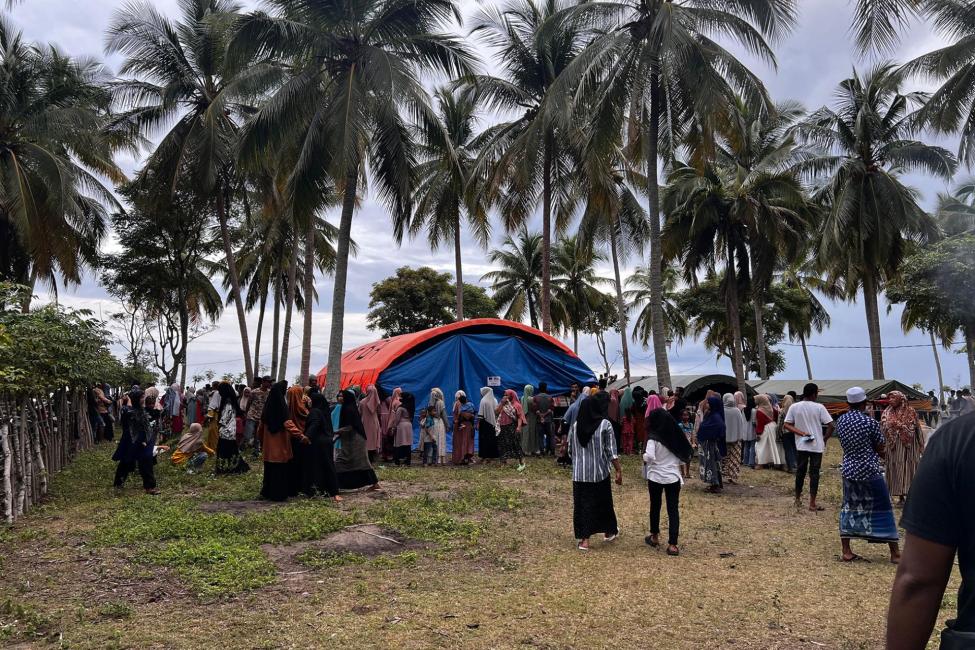-
Who we are
WHO WE AREThe International Organization for Migration (IOM) is part of the United Nations System as the leading inter-governmental organization promoting since 1951 humane and orderly migration for the benefit of all, with 175 member states and a presence in over 100 countries. IOM joined the United Nations system in September 2016.
About
About
IOM Global
IOM Global
-
Our Work
Our WorkAs the leading inter-governmental organization promoting humane and orderly migration, IOM plays a key role to support the achievement of the 2030 Agenda through different areas of intervention that connect both humanitarian assistance and sustainable development.
Cross-cutting (Global)
Cross-cutting (Global)
- Data and Resources
- Take Action
- 2030 Agenda
Record Number of 60.9 Million Internal Displacements in 2022: IDMC Report
Geneva – Nearly 61 million new internal displacements, or movements, were registered in 2022, according to a newly released Internal Displacement Monitoring Centre (IDMC) report, a 60 per cent increase compared to the previous year. This figure is the highest ever reported, and shows the volume of not just new displacements, but also repeated ones.
The Global Report on Internal Displacement (GRID) 2023 shows that conflict and violence triggered 28.3 million displacements, the highest figure in a decade, with Ukraine accounting for a 60 per cent of the total.
The International Organization for Migration (IOM) is an IDMC GRID partner, providing reliable and accurate data through its Displacement Tracking Matrix (DTM), the world’s largest source of primary data on internal displacement.
Every year, millions of people are displaced because of disasters. Last year, disasters including the floods in Pakistan and typhoon Noru in the Philippines led to 32.6 million internal displacements, the highest ever recorded. The number is expected to rise as the frequency, duration and intensity of natural hazards worsens in the context of climate change. The World Bank has projected that as many as 216 million people could become internal climate migrants by 2050, if concerted climate action is not taken.


Internal displacements between 2013 and 2022. © IDMC, GRID 2023
“We are seeing the continuing trend of unprecedented large-scale disasters causing significant loss of life, destruction of homes and livelihoods and new levels of displacements. Enhancing our common efforts on climate action and investing in safe, regular and orderly migration pathways is more important than ever,” said IOM Director General, António Vitorino.
“Determining the needs of people who are forced to move because of conflict, violence and disasters is crucial to ensure humanitarian assistance and essential services can reach people who need this support the most in a timely manner.”
This year’s report highlights food insecurity as a driver, consequence and potential barrier to solutions to internal displacement. Unprecedented, multi-dimensional crises are becoming the norm and the impact on human mobility is increasingly evident. Crises related to ongoing climate impacts, the lingering effects of the pandemic, economic instability, rising food prices and the global reverberations of war in Europe resulted in record-high levels of food insecurity in large parts of the world in 2022.
Despite these daunting challenges, knowledge gaps remain in how the international community understands and addresses internal displacement in conflict and disaster contexts.
The IDMC GRID report is a clear warning that concrete action needs to be taken now to find sustainable solutions to internal displacement, and is an invaluable tool for humanitarian and development partners, governments and a range of diverse stakeholder groups as they work to prepare for and prevent future displacements.
***
For more information contact:
Chloé Lavau, IOM Communications Officer for Climate Change and Migration, clavau@iom.int
Migration, Environment, Climate Change and Risk Reduction Division: mecrHQ@iom.int

